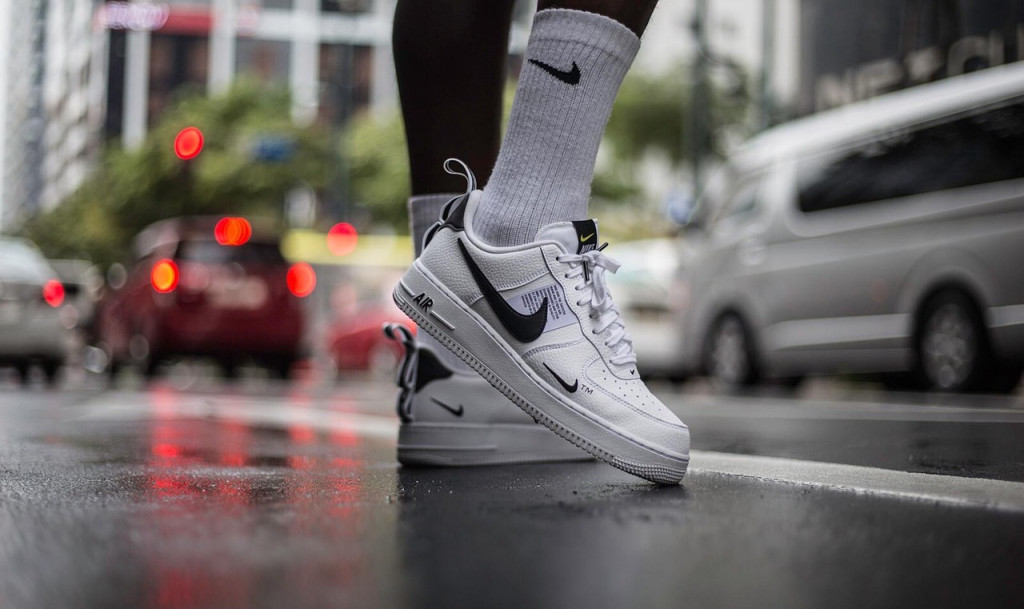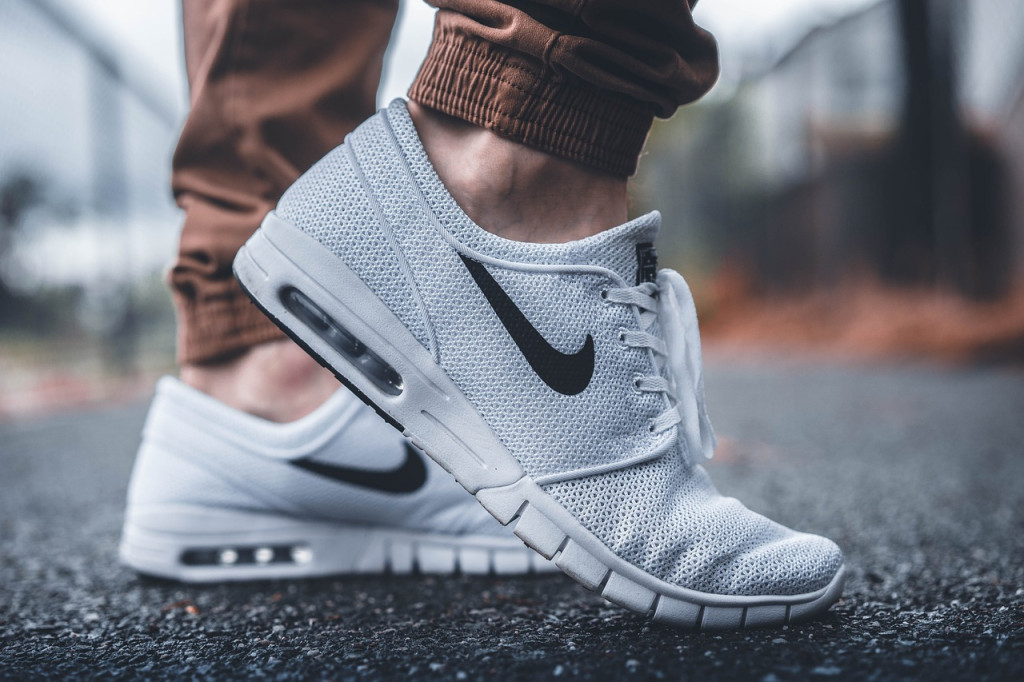Step into the world of fashion with a deep dive into the fascinating world of platform sneakers. In this article, you’ll discover the intricate details that make up the anatomy of a platform sneaker’s sole. From the sturdy rubber material to the innovative designs and ergonomic features, we’ll explore how these elevated shoes have become a beloved trend embraced by both fashion enthusiasts and sneakerheads alike. Lace up your sneakers, because we’re about to uncover the secrets behind these fashionable footwear wonders.
Why Platform Sneakers Are Popular
Platform sneakers have become increasingly popular in recent years, and it’s easy to see why. Not only do they offer a unique and stylish twist on traditional sneakers, but they also provide a range of benefits that make them a favorite among fashion-forward individuals like yourself. From the purpose of the sole to the materials used and the design elements incorporated, platform sneakers are a versatile and trendy choice for any fashion enthusiast.
The Purpose of the Sole
The sole of a platform sneaker plays a crucial role in its overall functionality and appeal. There are three primary purposes that platform sneaker soles serve, each contributing to the shoe’s overall comfort and style.
Shock Absorption
One of the key purposes of the sole is shock absorption. The additional height of the platform effectively absorbs the impact of each step, reducing the strain on your joints, especially your knees and hips. This feature is particularly useful if you’re someone who is constantly on the go or spends long hours on your feet.
Enhanced Height
Platform sneakers are well-known for their ability to add a few inches to your overall height. This can be a confidence booster and make you feel taller and more powerful. Whether you want to achieve a more commanding presence or simply stand out in a crowd, platform sneakers are an excellent choice.
Style and Fashion
Last but certainly not least, the sole of a platform sneaker adds a unique and stylish element to any outfit. It instantly elevates your look, giving it an edgy and fashionable vibe. Whether you opt for a classic white sneaker with a chunky sole or a bold, colorful design, platform sneakers are a fashion statement in their own right.

Materials Used in Platform Soles
Platform sneaker soles are made using a variety of materials, each offering its own benefits and characteristics. Understanding the different materials used in platform soles can help you choose a pair of sneakers that suit your personal preferences and needs.
Rubber
One of the most commonly used materials for platform soles is rubber. Rubber offers excellent durability, making it ideal for everyday wear. It also provides a good grip on various surfaces, ensuring that you stay stable and secure with each step.
EVA Foam
Ethylene-vinyl acetate (EVA) foam is another popular choice for platform soles. EVA foam is lightweight and offers exceptional cushioning, providing maximum comfort for extended periods of wear. It also has excellent shock absorption properties, further enhancing the overall comfort and support of the sneaker.
Crepe
Crepe is a natural material derived from the latex of rubber trees. It has a unique texture, offering a slightly soft and bouncy feel underfoot. Crepe soles are known for their flexibility and ability to conform to the shape of your feet, providing a customized fit and exceptional comfort.
Wood
Wooden platform soles exude a retro and vintage vibe. They are typically made from sturdy and durable materials such as cork or solid wood. Wooden soles offer a distinct aesthetic appeal and can add a touch of elegance and sophistication to your overall look. However, they may require more care and maintenance compared to other materials.
Design Elements of a Platform Sneaker’s Sole
A platform sneaker’s sole comprises several design elements that work together to create a functional and fashionable shoe. Understanding these elements can help you make an informed decision when selecting a pair of platform sneakers.
Outsole
The outsole is the bottom part of the sole that comes into direct contact with the ground. It is responsible for providing traction and durability. Outsoles often feature various tread patterns to maximize grip and prevent slippage. Additionally, they are designed to withstand the wear and tear of everyday use, ensuring the longevity of your platform sneakers.
Midsole
Located between the outsole and insole, the midsole is crucial for cushioning and support. It absorbs shock during foot strikes, reducing the impact on your joints and muscles. Midsoles are typically made of materials such as EVA foam or polyurethane, offering different levels of cushioning and stability.
Insole
The insole is the inner part of the sole that directly contacts your feet. It provides additional cushioning, arch support, and comfort. Insoles can be removable or built-in, and they may incorporate features such as memory foam or moisture-wicking properties to enhance overall foot comfort.
Heel
The heel of a platform sneaker, as the name suggests, refers to the raised part at the back of the shoe. Platform sneakers often have a chunky heel design to add height and stylish flair. Heels can vary in height, from subtle to towering, allowing you to choose the level of elevation that suits your preferences and outfit.

Outsole Features
The outsole plays a critical role in the overall performance and functionality of a platform sneaker. It possesses several key features that contribute to the shoe’s overall quality and user experience.
Tread Pattern
The tread pattern on the outsole is crucial for providing traction and preventing slippage. Different tread patterns are designed for specific activities or terrains. For example, deeper grooves and multidirectional patterns are excellent for outdoor activities, while shallower patterns may be more suitable for indoor wear. The tread pattern selection largely depends on your intended use and personal preferences.
Durability
Outsoles are typically subjected to constant wear and tear, making durability a crucial factor to consider. High-quality outsoles should be resistant to abrasion and capable of withstanding daily use without significant damage. Rubber and crepe outsoles often excel in terms of durability, ensuring that your platform sneakers last longer.
Grip
Grip is an essential feature of a well-designed outsole. A good grip ensures that you have reliable traction on various surfaces, preventing slips and falls. Whether you’re walking on wet pavements or slippery floors, a quality outsole grip gives you the confidence to move around comfortably and securely.
Midsole Features
The midsole of a platform sneaker is responsible for providing cushioning, support, and stability. Understanding the different features of the midsole can help you find a sneaker that suits your specific needs.
Cushioning
Cushioning is a vital aspect of the midsole, as it directly affects the comfort of the sneaker. Different materials, such as EVA foam or polyurethane, offer varying levels of cushioning. Some individuals prefer maximum cushioning, while others may prefer a firmer feel. Consider your personal preferences and intended use when selecting a platform sneaker with the right cushioning for you.
Support
The midsole also plays a crucial role in providing support to your feet. It helps distribute your body weight evenly and reduces strain on specific areas, such as the arches. Look for platform sneakers with a supportive midsole if you require extra stability and alignment.
Stability
Stability is essential for preventing excessive foot motion, particularly during athletic activities or long walks. The midsole of a platform sneaker should offer sufficient stability to minimize the risk of ankle rolling or any other form of instability. Consider the overall structure of the midsole and whether it provides the stability you need for your desired activities.

Insole Features
The insole of a platform sneaker is where your feet make direct contact with the shoe. It should offer optimal comfort and support, and different features can enhance the overall experience of wearing platform sneakers.
Comfort
The primary purpose of the insole is to provide comfort to your feet. Look for platform sneakers with insoles that offer additional cushioning or padding for a plush and cozy feel. Memory foam insoles are particularly popular for their ability to conform to the shape of your feet, ensuring a custom fit and unmatched comfort.
Arch Support
If you require extra arch support, pay attention to the design of the insole. Some platform sneakers feature built-in arch support, catering to individuals with higher arches or conditions such as plantar fasciitis. Arch-supportive insoles help reduce strain on the arches and promote proper foot alignment.
Moisture Wicking
Sweaty feet can be uncomfortable, especially during warm weather or intense physical activities. Look for platform sneakers with insoles that incorporate moisture-wicking properties. These features help absorb and distribute moisture, keeping your feet dry and odor-free throughout the day.
Heel Features
The heel of a platform sneaker is responsible for adding height and defining the shoe’s style. Understanding the different features of the heel can help you choose a platform sneaker that suits your desired look and level of comfort.
Height
Platform sneakers come in various heel heights, allowing you to customize your desired level of elevation. Whether you prefer a subtle lift or want to make a bold statement with towering heels, there is a platform sneaker heel height for everyone. Consider your comfort level and the overall balance of the shoe when selecting the appropriate heel height for you.
Sturdiness
Sturdiness is an essential characteristic of a platform sneaker’s heel, particularly if you enjoy wearing the shoes for extended periods or engage in physical activities. A sturdy heel ensures that you feel stable and confident with each step, minimizing any wobbling or discomfort. Look for platform sneakers with well-constructed heels that provide support and durability.
Style
The heel of a platform sneaker adds a unique style element to the overall shoe design. Chunky heels are a popular choice as they exude a fashionable and edgy vibe. Additionally, the style of the heel can complement or contrast with the rest of the shoe, allowing you to express your personal style and create visually appealing outfits.
Common Variations of Platform Soles
Platform soles come in various designs, each offering its own distinct characteristics and style. Familiarize yourself with these common variations, so you can choose a platform sneaker that matches your preferences and outfit choices.
Wedge Sole
Wedge soles are a popular variation of platform soles that provide a sleek and streamlined look. The heel and the forefoot are connected by a continuous sole, creating a smooth and gradual elevation. Wedge soles offer excellent stability and are often favored for their comfort and versatility. They can be dressed up or down, making them suitable for various occasions and outfits.
Flatform Sole
Flatform soles are characterized by their flat, elevated platform design. Unlike wedge soles that have a distinct heel, flatform soles offer equally elevated platforms throughout the entire sole. Flatform sneakers are known for their unique and avant-garde look. They provide height without the discomfort of high heels, making them a popular choice for individuals who value comfort and style.
Athletic Sole
Athletic soles are designed specifically for sports or active pursuits. These platform soles often feature excellent shock absorption, stability, and grip. Athletic platform sneakers are ideal for individuals who enjoy activities such as running, hiking, or participating in sports. They offer the perfect balance of comfort, performance, and style, allowing you to excel in your chosen activities while looking trendy.
Care and Maintenance of Platform Sneaker Soles
To keep your platform sneakers in excellent condition and prolong their lifespan, proper care and maintenance of the soles are essential. Follow these tips to ensure your platform sneaker soles continue to provide comfort and style.
Cleaning
Regularly cleaning your platform sneaker soles helps remove dirt, grime, and stains that can accumulate over time. Use a soft brush or cloth and mild soap or sneaker cleaner to gently scrub the soles. Avoid using harsh chemicals or abrasive materials that can damage the sole’s surface. Once cleaned, allow the soles to air dry completely before wearing them again.
Protection
Prevent excessive wear and tear by applying a sole protector or spray to your platform sneaker soles. These protective coatings create a barrier that reduces friction and protects against scratches and scuff marks. Additionally, using a waterproof spray can help repel water and prevent moisture damage, ensuring your platform sneakers remain in great condition even during wet weather.
Replacing
Despite regular care and maintenance, platform sneaker soles may eventually wear out or become damaged. If you notice significant wear on the outsole, decreased cushioning in the midsole, or discomfort caused by the insole, it may be time to replace the soles. Consult a professional shoe repair service or the manufacturer for guidance on replacing the soles or inquire about warranty options if applicable.
In conclusion, platform sneakers have gained popularity due to their unique style, enhanced height, and superb comfort. The sole of a platform sneaker is essential for delivering these benefits, incorporating features such as shock absorption, various materials, and design elements. By understanding the purpose of the sole, the materials used, and the design elements, you can make an informed decision when selecting your next pair of platform sneakers. Remember to care for your platform sneaker soles by cleaning them regularly, protecting them from damage, and replacing them when necessary. Embrace the trend and step up your style with platform sneakers that elevate both your fashion game and your confidence.


